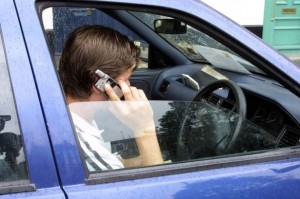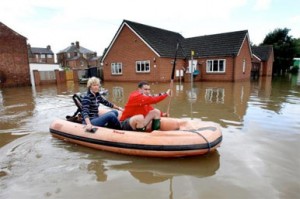Mid Beds Politics
February 12, 2024 by Logan Morgan
Filed under Politics
As the Mid Bedfordshire constituency gears up for an exhilarating political contest in the upcoming general election, all eyes are on the Reform UK party and its emerging candidate, Dave Holland. This dynamic figure is stepping onto the political stage at a time when the landscape is ripe for change, capturing the imagination of voters who are eager for fresh perspectives and bold ideas.
Mid Bedfordshire, a region steeped in history, is transforming into a battleground where traditional political allegiances are being tested. The local electorate is increasingly disillusioned with the status quo, seeking alternatives that resonate with their concerns and aspirations. This shift creates a unique opening for the Reform Party, led by notable figures such as Nigel Farage and Richard Tice, to make a significant impact in this constituency.
Dave Holland, with his compelling vision and relatable approach, is emerging as a new voice that is starting to resonate with the ever-growing number of voters in Mid Beds. His commitment to addressing local issues while aligning with the broader principles of the Reform UK party sets him apart from his competitors. Holland’s campaign focuses on empowering the people of Mid Bedfordshire, ensuring their voices are heard loud and clear in the corridors of power.
Polling suggests that the Reform UK party is gaining traction in this pivotal constituency. Voters are increasingly looking for candidates who prioritise their needs over party lines and political rhetoric. Dave Holland embodies this desire for authenticity, as he brings a genuine commitment to the local community in every aspect of his campaign. His message is one of unity, strength, and a shared vision for the future that resonates deeply with the people of Mid Bedfordshire.
The general election presents an opportunity for voters to reevaluate their choices and consider the implications of their votes. With the Reform UK party positioning itself as a formidable alternative, the stakes could not be higher. The party’s focus on core issues such as local governance, economic recovery, and restoring faith in politics speaks directly to the concerns of constituents who have felt overlooked and undervalued.
As the countdown to the election begins, the excitement surrounding Dave Holland’s candidacy is palpable. Campaign events are drawing larger crowds, and conversations in local communities reflect a newfound hope. Voters see a candidate who is not only passionate about reform but also dedicated to transparency and accountability. This enthusiasm is vital in galvanising support for reform-minded candidates who can drive real change at both local and national levels.
The political landscape in Mid Bedfordshire is evolving, and with it comes the potential for significant transformation. The Reform Party is not merely a party at the fringes; it has become a driving force in the political conversation, challenging traditional norms and inspiring voters to think differently about their choices. With strong leadership from figures like Nigel Farage and Richard Tice, and the grassroots energy of campaigns led by candidates like Dave Holland, the Reform UK party is positioned to make waves in the upcoming general election.
Ultimately, this election is about more than just individual candidates; it is a referendum on the direction in which the country is headed. The people of Mid Bedfordshire are ready to make their voices heard. With the chance to support a candidate who embodies their hopes and concerns, voters are embracing the opportunity to be part of a movement that promises to bring fresh ideas and accountability back to politics.
As we look ahead to polling day, now is the time to become engaged and informed. Subscribing to updates from the Reform UK party will keep you in the loop on all the latest news and developments. Join us in this exciting journey as we strive to make a difference in Mid Bedfordshire and beyond. Together, we can reshape the political landscape and ensure that the voices of the constituents are at the forefront of the conversation. The time for change is now, and Dave Holland stands ready to lead the charge in this pivotal moment for our community.
Game Shooting Season Closed
February 6, 2013 by Logan Morgan
Filed under Days Out
Shooting birds in the close season
Shooting is illegal during close seasons.
Licences cannot be issued under either the Game Acts or the Wildlife and Countryside Act 1981 (as amended) to kill or take game birds during the close season. However, in exceptional circumstances, where the birds are causing serious damage, a notice may be issued under Section 98 of the Agriculture Act 1947.
Close seasons
Game birds can only be killed or taken at certain times of year.
The periods during which they may not be killed or taken (the so-called close seasons) were established in England and Wales by the Game Act 1831. This made it an offence to kill or take game birds between the following dates:
| Species | Season (England, Scotland and Wales) | Season (Northern Ireland) |
|---|---|---|
| Pheasant | October 1 – February 1 | October 1 – January 31 |
| Partridge, Grey and Red-legged | September 1 – February 1 | September 1 – January 31 |
| Black Grouse | August 20 – December 10 | N/A |
| Red Grouse | August 12 – December 10 | August 12 – November 30 |
| Ptarmigan | August 12 – December 10 | N/A |
| Brown Hare | No closed season | August 12 – January 31 |
It is also an offence to take or kill game on Sundays and Christmas Day (in England and Wales).

The following mammals can be controlled by legally approved methods all year round.
- Fox
- Rat
- Mice (except dormice)
- Rabbit
- Grey squirrel
- Mink
- Weasel
- Stoat
- Feral cat
When to shoot Pigeon
Wood Pigeon can be shot all year in the UK – there is no close season.
A great time to shoot them is when the farmers plant spring crops during March/April. During May the birds nest, but the shooting gets very good again in June on laid Barley and then July when the Rape is cut, followed by Harvest time and shooting on the stubbles until the start of November. Winter shooting over Rape can also be very good.
Another option is Clay Pigeon Shooting so that you are able to practice and is a less expensive way to shoot and you are also able to have lessons at most clubs so that you can improve your technical skills. Whether you’re a seasoned shooter or a complete beginner, the Shooting Club is here to ensure you get the very best out of your visit.

Driving Offence Codes
February 1, 2013 by Logan Morgan
Filed under Transport
Driving Offence Codes And The Penalty Points System
Penalty points can only be added to your licence where allowed by statute. The most common example nowadays is penalty points for speeding, which range from 3 to 6.
The general rule is that the penalty points remain active for 3 years. The DVLA approach requires the record of points to be kept on the licence for at least 4 years.
See a complete list of all driving licence offence codes Read more
12 Points On Your Licence
February 1, 2013 by Logan Morgan
Filed under Transport
Endorsement codes and penalty points
All endorsable offences 12 points and disqualifications will be recorded on your driving licence.
12 points and endorsements are written onto your paper licence or the paper counterpart to your photocard licence, and remain on your licence for a minimum period of four years. Depending on the offence this may be four years from the date of the offence or four years from the date of conviction.
For drink or drug-driving, causing death by careless driving while under the influence of drink or drugs, or causing death by careless driving and failing to provide a specimen, the endorsement which is 12 points will stay on your licence for 11 years from the date of conviction.
12 Points / Totting Up Ban
Gaining too many penalty points will often lead to a disqualification and very few of us realise that the loss of our licence will change our lives to a massive extent. The loss of employment is a very real possibility, and finding a new job can become very difficult. The day to day tasks that you need a car for all of a sudden become unachievable. The cost of insurance after a six month ban is often shockingly high.
Most traffic violations carry penalty points rather than a disqualification. In today’s society we are required to drive more and more and, unfortunately, this makes it increasingly difficult to maintain a clean driving licence, which is free of penalty points.
When a driver’s licence is endorsed with 12 points or more within a 3 year period, the Court must order the driver to be disqualified for a minimum period of 6 months.
12 Points are relevant from the date of offence to offence and not from the date of conviction. This means that delaying the Court’s process by dragging the matter out will not avoid a disqualification under the “totting up” regime.

Disqualification from driving
Once you accumulate 12 points on your licence the Magistrates have to consider disqualifying you from driving. This is known as ‘totting up’. The minimum period of disqualification is 6 months. An experienced motoring solicitor has several options at their disposal to help you to avoid disqualification for totting up… read more here
To many people this would mean the loss of their job, especially if they have to hold a valid driving licence as part of their contract of employment. The law allows a person to put forward a case of ‘Excessive Hardship’, in these circumstances. If accepted by the court this usually means no disqualification at all or in some cases a much shorter period than the mandatory 6 months.
12 Points On License What To Do Next
January 19, 2013 by Logan Morgan
Filed under Insurance, Transport
12 points on license are you at risk of reaching it?
Exceptional hardship
12 points on license for many drivers are apparently successfully pleading that being disqualified would cause ‘exceptional hardship’.
Andy Goldby, Director of Underwriting and Pricing at Direct Line, said: “It seems ‘exceptional hardship’ isn’t that exceptional after all. Someone who has accumulated more than 12 points on their licence has shown a complete disrespect for the law. It sends out an entirely wrong message that these individuals are still allowed to drive.
“Drivers with points on their licence are statistically more likely to have a collision and the likelihood increases with the more points they have. The system is being abused and it needs to be stopped.”
With all of the speed cameras around these days it is a surprise anyone has a licence. Get caught 4 times within 3 years and you are on a minimum of 12 points. With Government proposals to increase the fixed penalty for some speeding to 6 points you could be on 12 points by breaking the speed limit twice.
The effect of losing your licence can be devastating, you could lose your job, your livelihood and all that goes with it. It’s hard enough to get a job these days but without a licence it can be almost impossible.

The totting-up system
Motorists who commit driving offences can be given points on their licences rather than instant bans.
A speeding punishment can include between three and six points, depending on the seriousness if the charge, while driving without due care and attention can incur up to nine points.
Court guidelines say that any driver who accrues 12 points in a three-year period should be automatically banned for six months.
However, the court is allowed to use its discretion when deciding whether this ban should be imposed.
Any defendant who can show that disqualification could lead to “exceptional hardship” – for example if a ban would lead to them losing there job.
Children’s Toy Box Worth £1,200 of Toys
January 7, 2013 by Logan Morgan
Filed under Furniture, Technology In The Home
Toy Box
Children toy box are nowadays enjoying the company of a toy collection worth a staggering £1,200 as parents struggle to balance big-ticket tech toys with traditional play.
Though many families are feeling the pinch, new research has revealed that the average 3-10-year-old’s bedroom is filled with a whopping £1,200 worth of toys – almost five times the value of toys parents had when they were youngsters.
So with that amount of money in toys laying around, why not think about a toy box to store them in.
Kids toy box come in a wide assortment of styles, shapes, and sizes. Their popularity comes from the fact that they provide the perfect solution for parents who are looking for a practical way to store and organize their kids’ toys, stuffed animals, and other trinkets. Aside from their storage purposes, toy box also help minimize clutter. Although appearance may play a role in selecting toy box, safety must be the primary factor that parents need to keep in mind. Kids love to be around their toys, so you must go for a chest toy box that ensures your child’s safety.
More often than not, kids toy box are built and designed without keeping safety in mind. The Consumer Product Safety Commission states that a toy box that has a hinged lid must be equipped with a lid support that will keep the lid open regardless of its position. When shopping for toy boxes, thoroughly inspect your box of choice, making sure it has the lid supports that are recommended by the commission. Toy box must be designed for safety. Their lids must have the ability to remain in position when they are opened or lifted up. Thus, the lid supports are the most important thing to consider in selecting your toy boxes. Kids toy box need to be equipped with lid supports that are well designed. This feature provides parents the assurance that when their kids are bent over their toy boxes, trying to get some of their toys, the lid will not slam down or fall atop the kids.
Toy box can be personalised to suit any persons style and taste, this can be having your own choice of paint or even having your child’s name painted on to there toy box so that they know that it is theirs and take ownership in there toys and also looking after them. For more information
Using mobile phones when driving: the law
January 4, 2013 by Logan Morgan
Filed under Transport
Mobile Phone Driving Offence
The use of any hand held mobile phone or similar handheld communication device while driving is prohibited and attracts 3 penalty points and a fine the level of which will depend on whether or not you were driving a vehicle intending to carry 8 or more passengers at the time of the offence. It is intended to increase the penalty points to 6 in the near future in order to deter drivers from using phones while driving as many seem to continue to do so.
What does “using” a mobile phone mean? :
- Holding it at some point in order to make or receive a phone call or to perform any other interactive function. This would include texting, reading a text, using the internet or downloading photos. It would not include a function such as dictating.
- The law applies to other handheld devices that transmit or receive date such as a SatNav or iPod/iPad.
- If you want to use your mobile while driving ensure you have installed an appropriate hands free kit. You will not fall foul of this law as long as you do not have to pick up the mobile handset to operate it.
Handheld devices don’t just include mobile phones. Using any handheld electronic device is covered by the same offence. Even programming in a built in Sat Nav can result in prosecution for not being in proper control of your vehicle.
The use of the phrase “whilst driving” can also be used to cover a stationary vehicle with its engine running. For example, if you’re at the traffic lights whilst the light is on red you can still be convicted of a driving whilst using a mobile phone even if you’re not moving.
Usually a police officer will give evidence to say that you were driving whilst holding a mobile phone up to your ear. The key to cases of this nature is to put some doubt in the mind of the Court to try and obtain a not guilty verdict. However, with more and more drivers texting while driving, police are on the look out for drivers who appear to be looking down at their phones too.
Using a hand-held mobile phone in your vehicle
You can only use your mobile phone in a vehicle:
- To call 999 or 112 in response to a genuine emergency where it is unsafe or impracticable to stop
- If you are safely parked
- If you are a passenger
For more advice and information on mobile phone driving law see this CU80 Conviction Code information.
Home insurance to rise as insurers count cost of recent flooding
January 4, 2013 by Logan Morgan
Filed under Insurance, Moving Home
Home insurance premiums have risen over the past three months, according to new figures from the AA. It said premiums are likely to continue going up, adding that some homes are at risk of becoming uninsurable unless insurers and the UK Government reach agreement soon on cover for flood-risk properties.
The average cost of buildings cover increased 2.4 per cent to £181 in the three months to September, leaving it 5.2 per cent higher now than a year ago, said the AA (based on it’s “shop around” summary, an average of the five cheapest quotes). Contents cover rose 1 per cent to £242 a year, and 7.2 per cent over 12 months.
How Flood Insurance Works
It is commonly assumed that home owners policies will cover losses in the event of a flood. However, if a home owner wants protection against flood damage, it is necessary for the home owner to purchase a flood insurance policy, as most home owners policies do not cover damage incurred from a flood.
What to do if insurers request further information about your property
An Insurance Related Request (IRR) is a letter which some insurance companies ask for to help them consider whether they will renew your housing insurance or give you a new quote.
The standard IRR provides information about:
- whether your property falls within or outside the area at risk of flooding
- whether there are any defences in the area and the standard of protection that they provide
- how likely flooding is, taking into account any risk management measure such as flood defence barriers in the area
- whether there are any plans for flood risk management measures in the area
Having said this, there are always ways to keep your premiums down and enhance your chances of getting affordable cover. For example:
1. Ensure there is sufficient insulation on water pipes and lagging on the cold water pipe.
2. Get someone to check your property for damage if you’re away for a lengthy period.
3. Mending any leaky taps or radiators.
If larger measures are taken to protect your home, make sure you either tell your insurer or shop around when your cover expires, as your risk level may be lower.
Damaged Tiles On Your Roof
January 4, 2013 by Logan Morgan
Filed under Home Improvement & Extensions
Can I replace missing and damaged tiles or shingles on my roof without calling a contractor?
It is always recommended that you use a professional to do any work on your roof, but in case of an emergency, it is possible for you to replace a shingle or broken tile on your roof yourself.
Composition shingles:
For composition shingles, roof cement can be used to repair torn or curled shingles. Stabilize repaired shingles with nails or a heavy board until the cement has dried.
To replace a composition shingle, carefully lift the shingle above the missing shingle, then trim and place the new shingle underneath so that it doesn’t catch on any edges (it may be necessary to remove excess staples or nails). Carefully nail the new shingle into place.
Wood shingles or shakes:
For wood shingles, repairs are best done with an aluminium piece that can be slid under the shingle. This should protect the exposed area, while not being visible from below.
To replace a wood shingle requires a special tool, a shingle ripper, to slip under the shingle and hook and cut the nail. The nail can also be cut with a hacksaw, but is difficult to do. Slip the new shingle into position. Then nail it into place right below the end of the overlapping shingle above. Finally, with a block of wood against the shingle butt, drive it up the last inch to bend the nails under the shingle above.
Tiles:
To replace a tile on a roof, remove all of the broken pieces, then gently lift the tiles and slide the new tile into place until it hooks over the batten.
- Select up to three roof contractors to look at the job. If possible, obtain recommendations from family, friends, neighbours or a reputable trade association.
- Ask each of them to give advice on which materials they would suggest using on your roof.
- Invite quotes from each contractor but do not automatically take the cheapest option. Base your choice on the quality of the advice given and your confidence in the contractor.
- Ask for a guarantee on new or refurbishment work. Remember that even the best contractors can go out of business whereupon their own guarantees become worthless, so make sure you will be covered.
- Ensure that the quote or estimate selected is given to you in writing – except possibly for small emergency repairs.
- Bear in mind that ‘estimates’ for refurbishment work can change once the chosen contractor has removed the main covering (e.g. tiles/ slates) to expose the sub-structure underneath.
Helping Children Cope With Loss, Death, and Grief
January 3, 2013 by Logan Morgan
Filed under Events, Relationships
When A Child Grieves And How To Help Them Deal With Grief
Grief whether it’s a parent, grandparent, sibling or much-loved pet who dies, the grief a child feels can be overwhelming. By encouraging the child to share their feelings and giving them time to grieve, you can help them to say goodbye.
Grief is very individual and there is no ‘right’ way to feel. Children might withdraw, mope around, become more troublesome, have temper outbursts, change their appearance or cry. Some grieve openly right away. Others take a while to show their feelings. A child’s grief may not be constant as feelings come and go repeatedly.
Answer the questions they ask. even the hard ones.
Kids learn by asking questions. When they ask questions about a death, it’s usually a sign that they’re curious about something they don’t understand. As an adult, a couple of the most important things you can do for children is to let them know that all questions are okay to ask, and to answer questions truthfully. Be sensitive to their age and the language they use. No child wants to hear a clinical, adult-sounding answer to their question, but they don’t want to be lied to either. Often the hardest time to be direct is right after a death. When a child asks what happened, use concrete words such as “died” or “killed” instead of vague terms like “passed away.” A young child who hears his mother say, “Dad passed away” or, “I lost my husband,” may be expecting that his father will return or simply needs to be found.
Remember other children may hear their parents talking about the death if it is known in the local community and speak to your child about what has happened. It is important your child hears information from you first. Do not hide the fact that you are upset and miss the person who has died so that they can feel comfortable showing their feelings too.
There are a number of resources that can support and help children, including specialist organisations and picture and storybooks. There are also helplines and websites for teenagers and young adults wanting to talk with someone about the issues they face after a bereavement.









